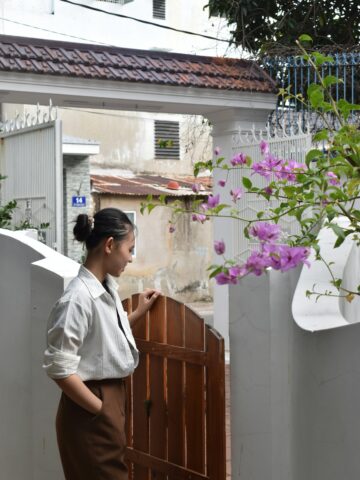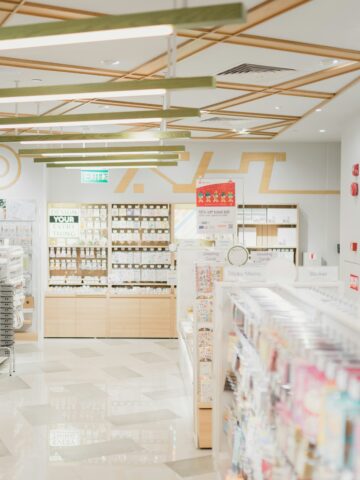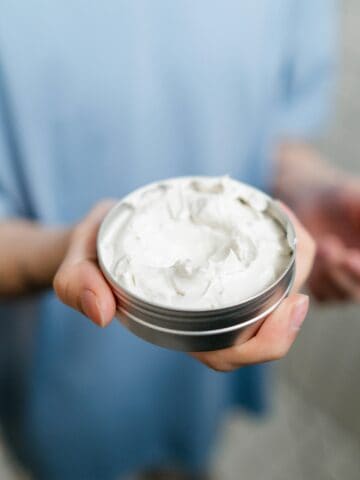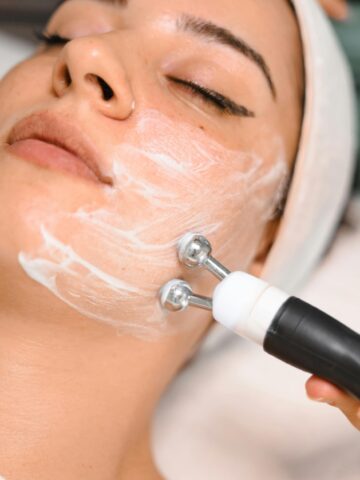Sunscreen is an essential part of any skincare routine, crucial not only for protecting against harmful UV rays but also for preventing premature aging and maintaining skin health. Korean sunscreens, in particular, have gained global popularity for their advanced formulations that offer high protection without the heavy feel typically associated with sunblocks.
These products are lightweight, crafted to blend seamlessly into the skin, providing broad-spectrum UV protection alongside skincare benefits like hydration and soothing effects. Whether you're a longtime K-beauty enthusiast or just starting to explore, discovering the right Korean sunscreen can transform your skincare approach.

Jump to:
🌞 What are Sunscreens?
Sunscreens are topical products designed to protect the skin from the harmful effects of ultraviolet (UV) radiation. There are 2 main types of UV radiation that can affect the skin: UVA and UVB.
UVA rays penetrate deep into the skin and are primarily responsible for premature aging and wrinkling, while UVB rays cause sunburn and play a significant role in developing skin cancer.
Sunscreens work by either absorbing, reflecting, or scattering the sun's rays on the skin, thus offering protection against these damaging effects. Formulated in various textures such as creams, gels, sticks, and sprays, sunscreens are an indispensable part of daily skin care, especially in sunscreens from Korea, which are often combined with other skin-benefiting ingredients.
🤔 Mineral vs. Chemical Sunscreens
Korean sunscreens can be categorized into two types: mineral and chemical. Mineral sunscreens use physical blockers such as zinc oxide or titanium dioxide to reflect UV rays, while chemical sunscreens work by absorbing and transforming the sun's rays into heat energy.
Both types have their pros and cons. Mineral sunscreens are generally considered safer for sensitive skin, less likely to cause irritation and have a longer shelf life. However, they can leave a white cast on darker skin tones and tend to feel heavier on the skin.
On the other hand, chemical sunscreens have a more lightweight texture, making them easier to apply and reapply throughout the day. They also tend to blend seamlessly into all skin tones without leaving a white cast. However, they can potentially irritate sensitive skin and may not be as stable in high temperatures.
📝 Criteria for Selection
SPF and PA Ratings
The Sun Protection Factor (SPF) measures how well a sunscreen will protect skin from UVB rays, the kind that causes sunburn and contributes to skin cancer.
The PA rating system, which is used widely in Asia, measures the level of protection from UVA rays, with more plus signs indicating greater protection. Products chosen have high SPF and PA ratings to offer broad-spectrum protection.
SPF rangings start at 15 and can go up to 100, with higher numbers indicating more protection. PA ratings range from PA+ to PA++++, with the latter offering the highest level of UVA protection. The higher the SPF and PA ratings, the better protected your skin will be from sun damage.
Texture and Application
A sunscreen’s feel and finish on the skin can determine how often it will be used. The selected sunscreens vary from lightweight serums to moisturizing creams, ensuring a pleasant application regardless of skin type.
Suitability for Skin Types
Different formulations are better suited for specific skin conditions, such as dry, oily, or acne-prone skin. Each product listed caters to these unique skin needs while providing excellent sun protection.
🔆 Top 5 Korean Sunscreens
Best for Dry Skin: Round Lab Birch Juice Moisturizing Sunscreen
Round Lab is renowned for its moisturizing products, and its Birch Juice Moisturizing Sunscreen is no exception. Popular on social media, this sunscreen has been praised for its user-friendly application, offering a non-greasy texture and leaving no white cast.
Dermatologists appreciate its formulation, featuring birch sap, known for its soothing and skin barrier-repairing properties. The sunscreen also boasts niacinamide, which aids in skin repair, brightens the complexion and provides additional protection - hyaluronic acid is included to ensure deep hydration.
- SPF Rating: 50+ PA++++
- FDA-Approved Filters: None (contains diethylamino hydroxybenzoyl hexyl benzoate, ethylhexyl triazone, and other advanced filters)
- Key Ingredients: Niacinamide, hyaluronic acid, natural birch sap
- Highlights: Non-greasy, no white cast, contains hydrating and brightening ingredients
Most Lightweight: Skin1004 Hyalu-Cica Water-Fit Sun Serum SPF 50+ PA++++
Jump on the TikTok hype train with Skin1004's Hyalu-Cica Water-Fit Sun Serum, a favorite that's captivated social media with its serum-like, featherlight consistency. This sunscreen not only offers superior sun protection, but also enhances skin with a dewy and fresh appearance.
It incorporates next-generation, photostable chemical UV filters like Tinosorb M and Uvinul A Plus. Ideal for combination skin, this hydrating formula is enriched with soothing centella asiatica and hyaluronic acid, providing a revitalizing boost, particularly for dry patches and rosacea-prone areas.
Its non-greasy, quick-absorbing nature keeps the T-zone clear, even with multiple applications throughout the day. Plus, its smooth, dewy finish serves excellently as a primer under makeup or on its own for an added glow.
- SPF Rating: 50+ PA++++
- FDA-Approved Filters: No (contains advanced filters like diethylamino hydroxybenzoyl hexyl benzoate and ethylhexyl triazone)
- Key Ingredients: Hyaluronic acid, centella asiatica, and extracts from arugula leaf, green tea, and broccoli
- Highlights: Ultra-lightweight hydration, non-greasy, glowy finish, excellent makeup base
Best for Sensitive Skin: Dr. G Green Mild Up Sun+ Sunscreen
Dr. G's Green Mild Up Sun+ Sunscreen is a top choice for those with sensitive skin or who frequently experience irritation from skincare products. This best-selling formula is designed to protect against both UV rays and skin irritants.
Dermatologist Dr. Chang specifically recommends it for its gentle nature and the presence of calming plant extracts like centella asiatica and houttuynia cordata, known for their soothing properties. While it does leave a mild white cast upon application, it mostly fades as the product is blended into the skin, although it may not be ideal for darker skin tones.
- SPF Rating: 50+ PA++++
- FDA-Approved Filters: Yes (includes zinc oxide)
- Key Ingredients: Centella asiatica, houttuynia cordata
- Highlights: Contains calming plant extracts, gentle on sensitive skin, dermatologist recommended
Best for Mature Skin: Cosrx Vitamin E Vitalizing Sunscreen SPF 50+
Cosrx's Vitamin E Vitalizing Sunscreen is a game-changer for those with mature and oiliness-prone skin. It features a specialized formula containing silica and cotton extract, which work together to mattify the skin and control excess sebum, ensuring that your T-zone remains grease-free throughout the day.
Endorsed by James Y. Wang, MD, a board-certified dermatologist based in Los Angeles, this sunscreen is highly recommended for its anti-aging benefits. Dr. Wang notes that vitamin E is essential for combating free radicals, which are known to accelerate the aging process, thereby helping to preserve the health and vitality of maturing skin.
- Type: Chemical
- SPF Rating: 50+
- Key Ingredients: Octisalate, avobenzone, vitamin E, silica, cotton extract, cocoa extract
- Best For: Individuals with oily-prone skin
- Highlights: Mattifying effect, controls excess sebum, fortified with antioxidants to combat premature aging
Best for Acne-Prone Skin: Some by Mi V10 Hyal Airfit Sunscreen Broad Spectrum SPF 50+
The Some by Mi V10 Hyal Airfit Sunscreen is a must-have for those dealing with acne or excess sebum. This sunscreen combines the power of niacinamide with the hydrating properties of hyaluronic acid to both soothe acne and moisturize the skin effectively.
It also includes a potent mix of vitamins B3, C, and E alongside anti-inflammatory cica extract and barrier-supporting ceramides, providing comprehensive skincare benefits. Despite its moist, white cream consistency upon application, it leaves absolutely no white cast, making it perfect for both discreet wear and robust protection.
- Type: Chemical
- SPF Rating: 50+
- Key Ingredients: Homosalate, niacinamide, hyaluronic acid, cica extract, tocopherol (vitamin E)
- Best For: Those with acne-prone and combination skin
- Highlights: Rich in vitamins and anti-inflammatory ingredients, hydrating, leaves no white cast
❓ Frequently Asked Questions
Korean sunscreens are often favored for their innovative formulas that provide broad-spectrum UV protection while also catering to various skin concerns. They tend to use newer, more stable UV filters that are less common in Western products and are known for their lightweight textures and ability to double as skincare, often including ingredients that hydrate, soothe, and repair the skin.
Yes, many Korean sunscreens are specifically formulated for sensitive skin, using gentle ingredients and avoiding potential irritants like alcohol and fragrance. For instance, the Dr.G Green Mild Up Sun+ Sunscreen is designed with sensitive skin in mind, featuring soothing plant extracts and minimal white cast, making it suitable for daily use.
For optimal protection, it's recommended to use approximately two fingers' worth of product for your face and neck. Reapplication is crucial, especially if you are spending extended periods outdoors, sweating, or swimming. Generally, it’s advisable to reapply sunscreen every two hours to maintain effective sun protection.





Leave a Reply